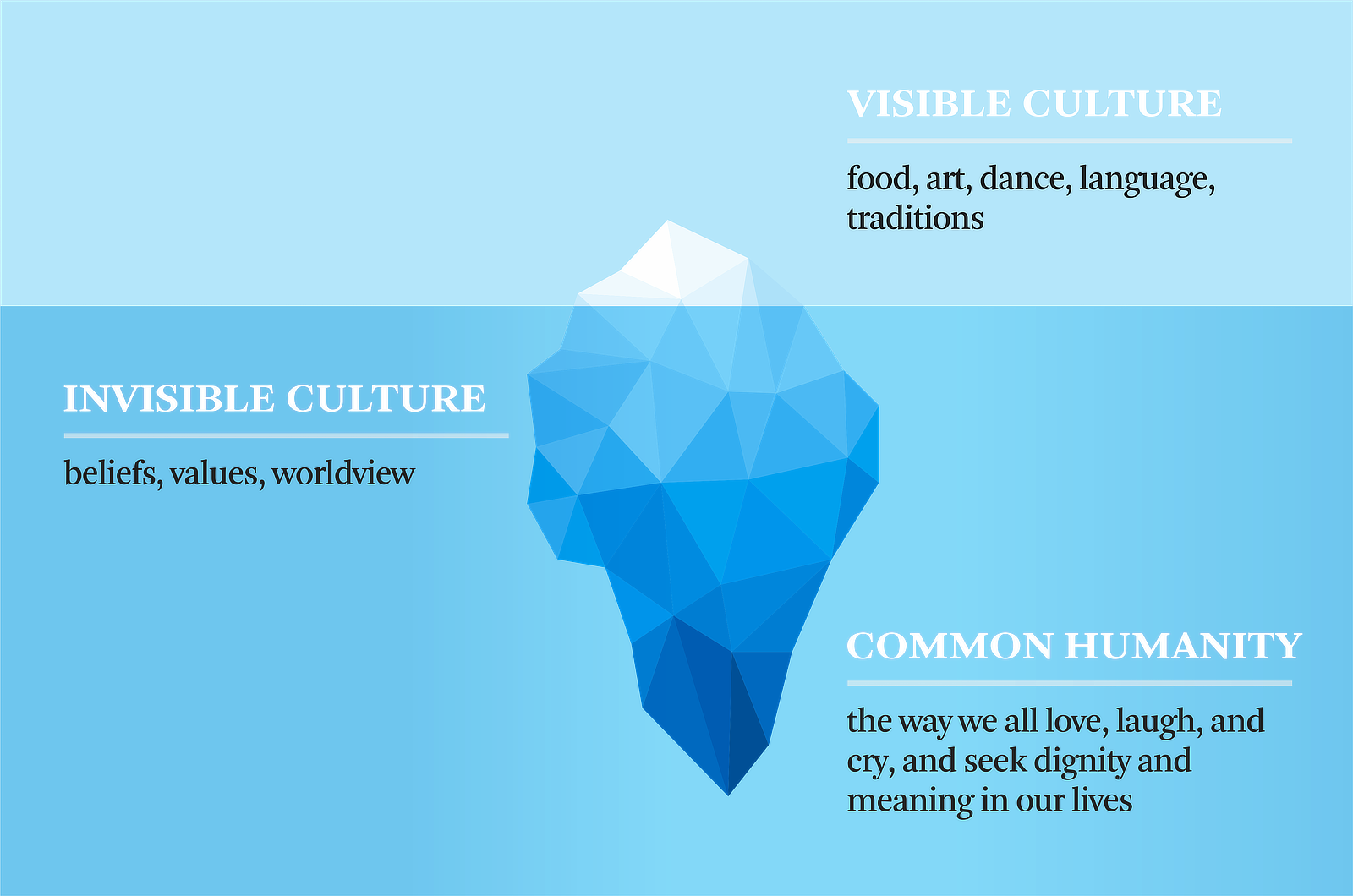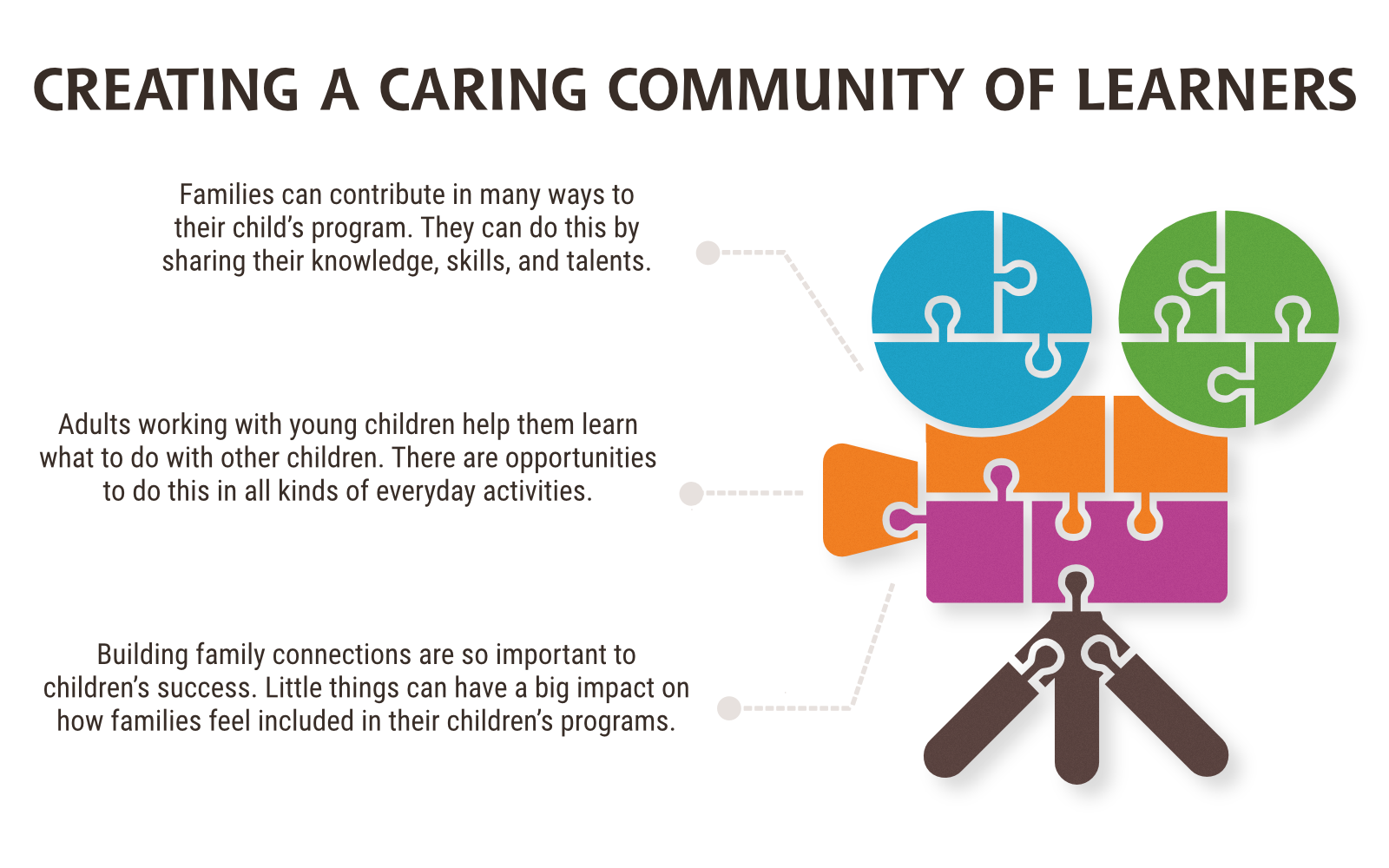03: Forming Positive Relationships
Learning about Each Child
Knowing each child’s strengths, interests, and preferences will allow us to gain better understandings of their individual personalities as well as help us identify how each child best learns. We gain this information by observing each child in our care, asking their families for important information, and looking at the progress that each child makes. With this information, educators can make individually appropriate adjustments to the activities, goals, and environment as needed.
Building Positive Relationships
Let’s talk about ways to form these positive relationships. We know that children’s development is promoted by secure and consistent relationships with responsive adults as well as the opportunity to form positive relationships with peers. Empathy and cooperation are key components to those relationships. Children need to know that the adults in their environments are available and will help them and respond to them as needed. As children form relationships with adults, trust is established. These nurturing relationships will lead to a promotion in children’s self-esteem and help create a positive self-image.
Children need to know that the adults in their environments are available and will help them and respond to them as needed. As children form relationships with adults, trust is established. These nurturing relationships will lead to a promotion in children’s self-esteem and help create a positive self-image.

Family and Cultural Influences
We additionally need an understanding of what is culturally important, including familiarizing ourselves with our children’s families and gaining an understanding of their values and expectations.
Impact of Culture
Another component of relationship building is the impact of culture. Children come into our settings as parts of different cultures and communities. Edward Hall theorized that culture is best thought of as an iceberg. An iceberg is unique because only a portion of the icy mass sits above the water while the majority of the iceberg is hidden under the water. Let’s think of each child as the iceberg in the water. The part of the iceberg that we can see represents culture of the child that we see in our care every day. We see the influence of culture in regards to the language they use, the clothes they wear and the holidays they celebrate. We may share some of the same customs with our children. However, we cannot forget the portion of that child’s culture that we do not see! That child has a family and communities that are helping shape his development.
Maybe that child is a member of a religious group. Maybe that child benefits from an extended network of family. Those influences help model that child’s emotions and motivations. Three different children may all be asked to do the same task. One child may complete the task with ease, while another may become frustrated and not complete the task because, in his family, if you are frustrated you are encouraged to take a break and come back to the task later. The third child becomes frustrated but sticks with the task because his family talks about persevering. Many of these factors are under the surface, or unconscious but extremely influential on his development and identity.

Creating a Caring Community of Learners
This community will also promote the development of healthy relationships, including problem-solving skills and the acceptance of differences. Within this caring community of learners, teachers are also helping their students learn how to create and maintain positive and meaningful relationships with each other.
 video of dad contributing to child care
video of collaboration among children
video of a family sign-in process
video of dad contributing to child care
video of collaboration among children
video of a family sign-in process
If there appear to be loading issues, check out the interactive through the following link: video of collaboration among children
Establishing Reciprocal Relationships with Families
Characteristics present in reciprocal relationships include “mutual respect, cooperation, shared responsibility, and negotiation of conflicts toward achievement of shared goals (NAEYC, 2009).” The goal is to create a collaborative partnership with our children’s’ families.
Two-way communication between the educators and families can provide information about a child’s successes and challenges. As educators, we should encourage family members to visit our programs and participate in daily activities so they gain comprehensive understandings of their child’s program.


